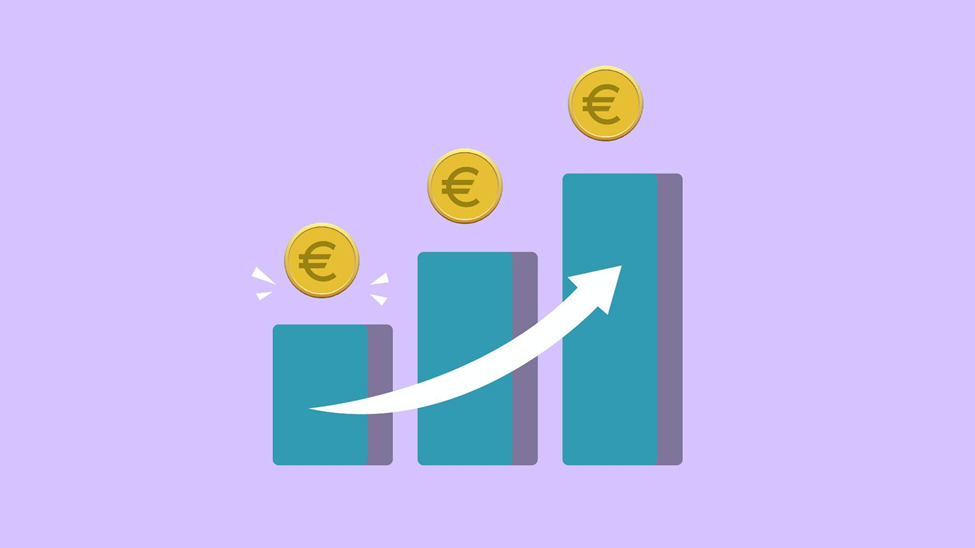If you haven’t already felt the effects of inflation, you may be in for a rough ride ahead. In 2021, seven in ten people from over 30 countries worldwide reported experiencing price increases for everyday essentials like food and transportation. And this is due to a higher inflation rate.

Which countries are hardest hit by inflation right now?
Unsurprisingly, Venezuela tops the list of countries plagued by severe inflation, mainly due to its government printing money in excess, taking on too much debt, and its inability to sell oil due to sanctions levied against them. In Venezuela, inflation was 686% in 2021, down from nearly 3,000% the prior year. Other countries suffering from high inflation in 2021 into 2022 include Sudan, Zimbabwe, Suriname, Yemen, Iran, and more. Regionally speaking, the hardest-hit areas in 2021 were Sub-Saharan Africa at 15.1%, Central Asia, and the Caucasus at 14.2%. Africa and the Middle East also sustained double-digit inflation, at 11.6%. In Eastern Europe, 2021, inflation hit 5.2%, while North America’s was slightly lower at 4.3%.
What’s causing the increased inflation?
Inflation is caused when the demand for goods and services exceeds the supply of those same goods and services. When this happens, suppliers of goods and services increase their prices, meaning that the purchasing power of each unit of currency decreases. Inflation isn’t a bad thing in itself; in fact, it can contribute positively to economic growth when kept low–ideally, around 1.5-2% annually.
The COVID-19 pandemic seems primarily responsible for many of the recent increases in inflation. National lockdowns caused both supply and demand to plummet, but when those lockdowns ended and demand came roaring back, suppliers could not keep pace, sending prices up. In several countries, government stimulus programs injected more money into circulation to help avoid a recession, though it may have come at the cost of excessive inflation.
In Europe, energy and food prices are among the key drivers of recent inflation. Europe saw record energy prices in 2021, marking a 54% increase from 2020 prices. In Estonia, record-high energy prices have increased living costs during the winter months. Cold temperatures across the continent drove demand up, but energy supplies were nowhere near adequate to meet this increased demand. The shortage stemmed primarily from the decrease in Russian natural gas exports, on which the EU is extremely reliant.
How will inflation change in 2022?

While Western Europe mostly managed to evade unhealthy inflation throughout most of 2021, fears of rising inflation in 2022 are palpable. In the second half of 2021, inflation in the Euro area more than doubled, with rates reaching 5% in December. Within the EU, Estonia (12%) and Lithuania (10.7%) logged double-digit monthly inflation in December 2021, with many people calling for the European Central Bank (ECB) to take measures to combat rising prices.
It’s impossible to know which direction inflation will move in 2022. One scenario, which many economists and ECB President Christine Lagarde think most likely, is inflation easing in 2022. Lagarde believes that the forces driving inflation will disappear as shortages and supply chain problems fade, leading to inflation settling. For the time being, Lagarde and the ECB are saying it is doubtful it will hike rates in 2022. Despite calls to take action against rising inflation rates in late 2021, Lagarde warned that prematurely raising rates would hinder growth.
Though the ECB doesn’t appear to be worried about inflation in 2022, others fear the central bank is downplaying the issue. If inflation does continue to rise, the ECB might change its tune and consider rate increases. In that situation, the question would be whether or not the central bank would act soon enough to deter further inflation without harming economic growth.
How will inflation impact other areas of the economy?
Inflation impacts every facet of the economy, from jobs and wages to spending and investing. Rising inflation is expected—to a degree—but when prices increase too much, it can have devastating effects on a nation’s economy.

Employment
It’s no secret that millions of workers are quitting their jobs in search of new work, a phenomenon dubbed the Great Resignation. When inflation is high, the job market tightens, tilting the balance of power in favor of employees. In most cases, high inflation means low unemployment, giving workers the freedom to choose and forcing employers to offer more attractive compensation packages to stay competitive.
Unfortunately, high inflation comes with major risks to the jobs market. If inflation is too high, many people will remove themselves from the job market to stay at home with young children. Lower-paying jobs essential to societal infrastructure will remain unfilled, and companies that can’t keep up with wage increases will fail. Some inflation can be healthy for job growth, but too much inflation can have the opposite effect.
Wages
As inflation increases, so do wages. Since higher inflation rates and higher prices for everyday goods go hand-in-hand, employers must pay more if they hope to retain employees. Typically, there is a wage lag period wherein employers must implement wage increases to help employees adjust to the increased cost of living. In Europe, even ECB employees themselves are pressuring the government to increase their wages more, citing rapidly-rising inflation.
Spending & Investments
When inflation rises and wages rise alongside it, many people spend and invest more. As currency value erodes, people seek to purchase durable goods (automobiles, household appliances, electronics, jewelry, etc.). In addition, people also look to investments to help them retain purchasing power or outpace inflation. Many investors will turn to precious metals since gold is commonly seen as the top hedge against inflation. All of this inflation-driven spending can fuel further inflation, with the demand generated by people eager to trade their devalued currency for durable goods and store-of-value assets pushing prices even higher.